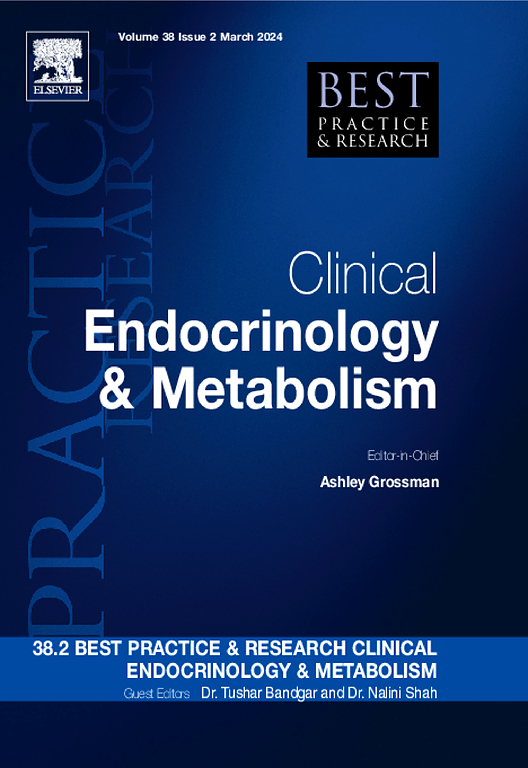Recent discoveries of Sino-Caucasian differences in the genetics of phaeochromocytomas and paragangliomas
IF 6.1
1区 医学
Q1 ENDOCRINOLOGY & METABOLISM
Best practice & research. Clinical endocrinology & metabolism
Pub Date : 2024-12-01
DOI:10.1016/j.beem.2024.101928
引用次数: 0
Abstract
Pheochromocytomas and paragangliomas (PPGLs) represent the highest degree of heritability of any known tumor types in humans. Previous studies have characterized a dramatic difference between Chinese and European Caucasians with regards to both genetics and clinical features of PPGLs. The proportion of PGLs in Chinese patients was higher than in Caucasians, and the prevalence of metastasis was much lower in Chinese patients. Compared with Caucasians, there were more pathogenic variants (PVs) found in HRAS and FGFR1, but less in NF1 and SDHB. There were less germline PVs found in Chinese patients. Importantly, in Chinese patients, there was a large proportion of PGLs with PVs found in HRAS and FGFR1, mostly with epinephrine-producing capacity. This finding provided solid evidence that genetics (cluster 1 vs. 2), rather than location (PCC vs. PGL), determines the catecholamine-producing phenotype. Besides, the lower prevalence of SDHB partially explained lower occurrence of metastatic lesions in Chinese patients. These findings underscore the importance of considering ethnic differences when evaluating PPGLs and patient outcomes.
最新发现的中-高加索人在嗜铬细胞瘤和副神经节瘤遗传学方面的差异。
嗜铬细胞瘤和副神经节瘤(PPGLs)是人类已知肿瘤类型中遗传率最高的一种。以往的研究表明,中国人和欧洲白种人在 PPGLs 的遗传学和临床特征方面存在巨大差异。中国患者中 PGLs 的比例高于白种人,而中国患者的转移率则低得多。与白种人相比,HRAS和FGFR1的致病变异较多,而NF1和SDHB的致病变异较少。在中国患者中发现的种系变异较少。重要的是,在中国患者中,发现 HRAS 和 FGFR1 中存在 PV 的 PGL 占很大比例,其中大部分具有肾上腺素分泌能力。这一发现提供了确凿证据,表明儿茶酚胺分泌表型是由遗传(第1群与第2群)而非位置(PCC与PGL)决定的。此外,SDHB发病率较低也部分解释了中国患者转移性病变发生率较低的原因。这些发现强调了在评估PPGL和患者预后时考虑种族差异的重要性。
本文章由计算机程序翻译,如有差异,请以英文原文为准。
求助全文
约1分钟内获得全文
求助全文
来源期刊
CiteScore
11.90
自引率
0.00%
发文量
77
审稿时长
6-12 weeks
期刊介绍:
Best Practice & Research Clinical Endocrinology & Metabolism is a serial publication that integrates the latest original research findings into evidence-based review articles. These articles aim to address key clinical issues related to diagnosis, treatment, and patient management.
Each issue adopts a problem-oriented approach, focusing on key questions and clearly outlining what is known while identifying areas for future research. Practical management strategies are described to facilitate application to individual patients. The series targets physicians in practice or training.

 求助内容:
求助内容: 应助结果提醒方式:
应助结果提醒方式:


